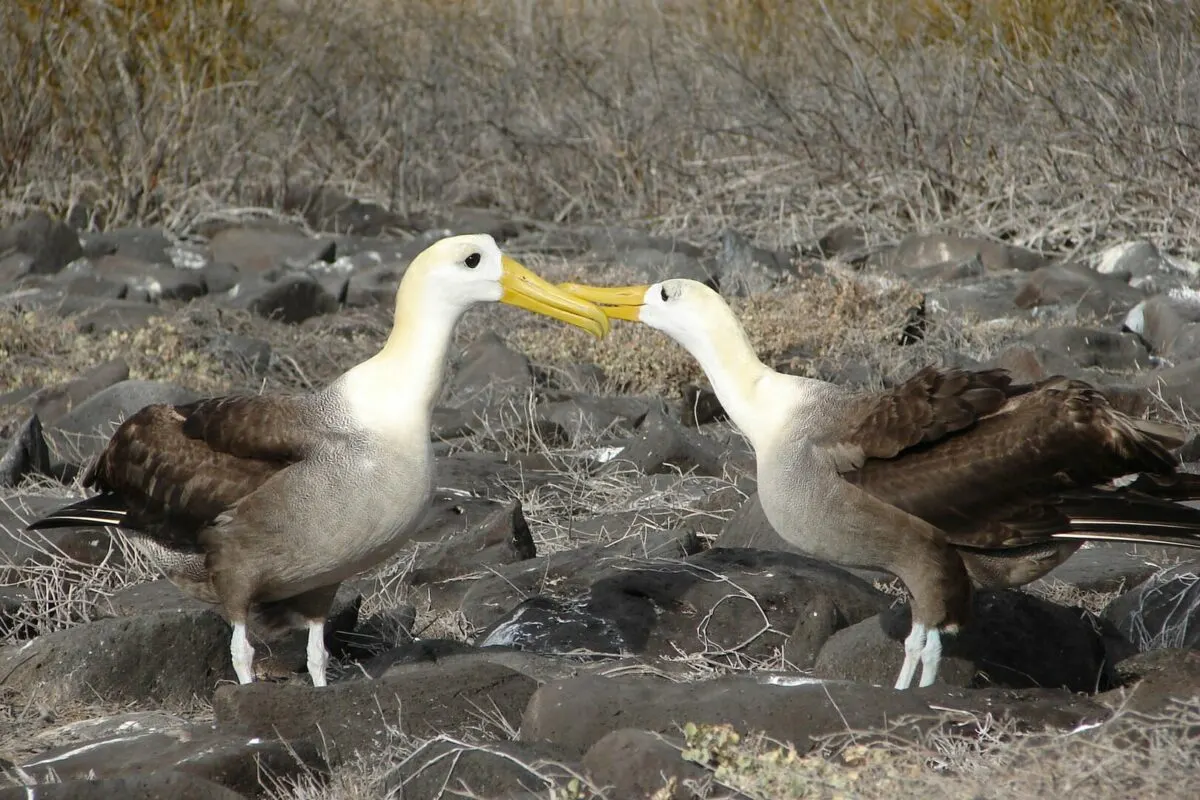Explore the wildlife of the Galápagos Islands with us! From majestic marine iguanas to playful blue-footed boobies, this remote archipelago boasts some of the most incredible creatures on earth.
You won’t want to miss out on this amazing expedition into what Charles Darwin famously described as “a little world within itself.”
Exploring the Fascinating Fauna of the Galápagos Islands
The Galápagos Islands boast a wealth of exceptional and captivating wildlife. From the marine iguana to the Galápagos sea lion, each creature is adapted to thrive in this remote archipelago and has its own story.
Here, we explore some of the most iconic animals that call the Galápagos home.
1. Marine Iguana – The Only Marine Lizard
The marine iguana stands as a remarkable testament to the wonders of evolution. It represents the sole species of lizard that ventures into the sea for sustenance. These dark, rough-skinned lizards bask in the sun during the day and then dive into the cool waters to feed on algae and seaweed. The Galápagos Islands are home to several subspecies of marine iguanas. Each is adapted to the unique conditions of their particular island.
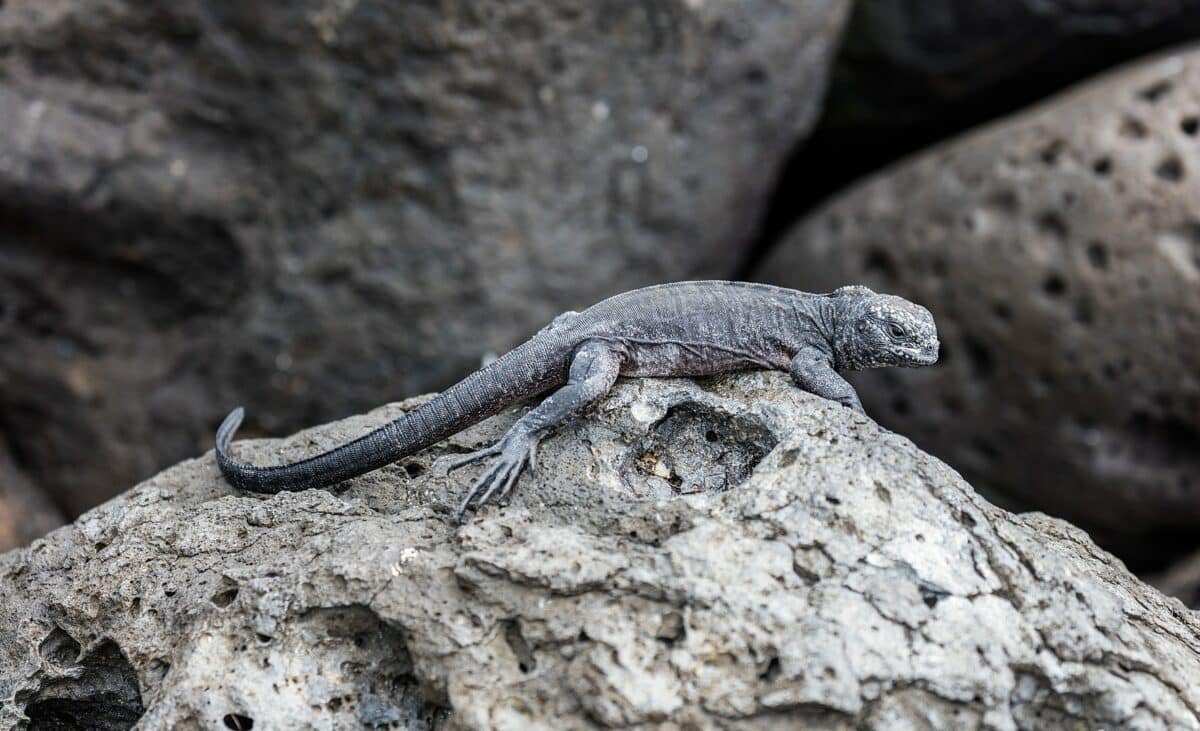
2. Blue-Footed Booby – The Dancer Of The Sky
The blue-footed booby is a delightful bird instantly recognizable for its bright blue feet. The enchanting courtship ritual of these creatures involves a mesmerizing display of their vibrant azure webbed feet, aimed at alluring potential mates. They are excellent divers who can plunge into great heights to catch fish. Visitors to the Galápagos can often spot these beautiful birds on rocky outcrops or nesting on the ground.
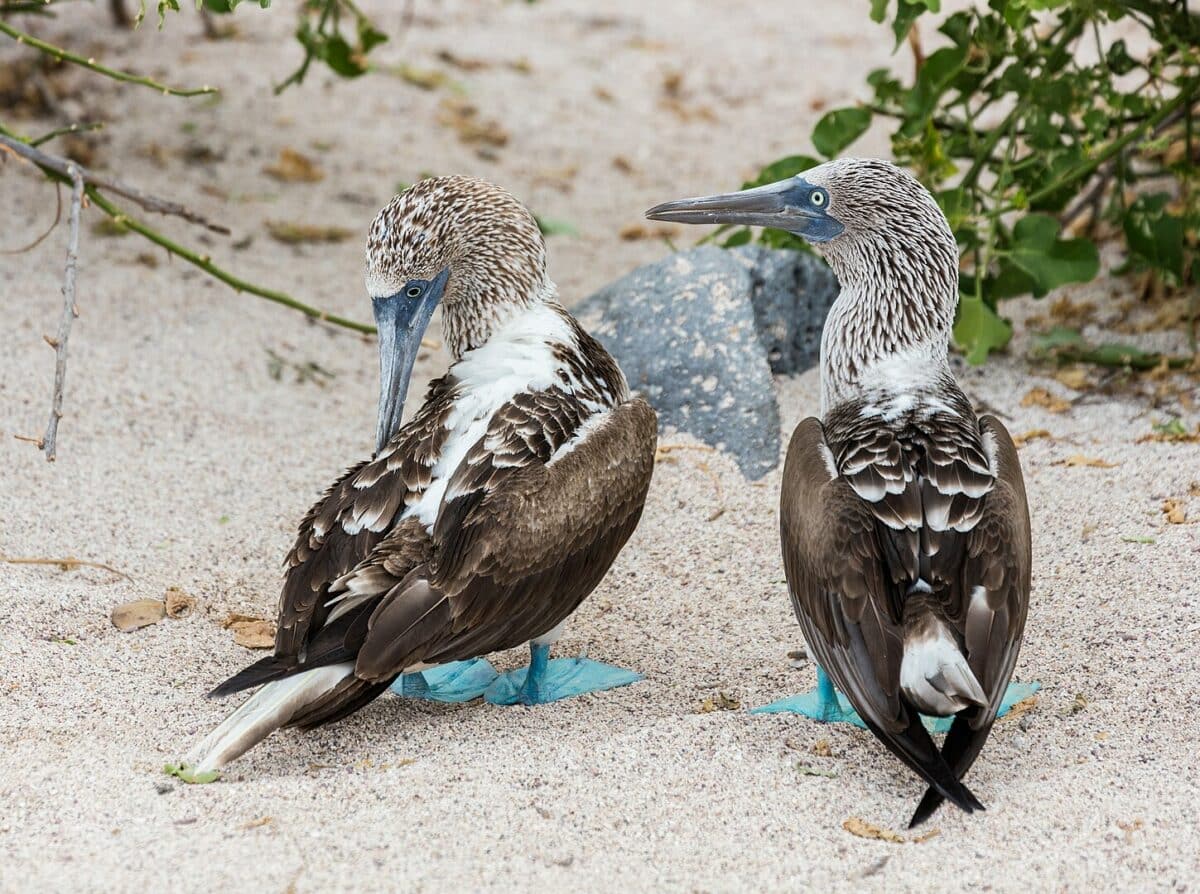
3. Galápagos Giant Tortoise – The Living Giant
The Galápagos giant tortoise is a true icon of the Galápagos. These majestic creatures can reach a weight exceeding 400 kg and boast a lifespan surpassing 100 years. Within the Galápagos Islands, a variety of subspecies of giant tortoises thrive. Each uniquely adapted to the environmental characteristics of their respective island habitats. Visitors to the Galápagos can often see these magnificent creatures strolling through the grasslands or bathing in muddy pools.
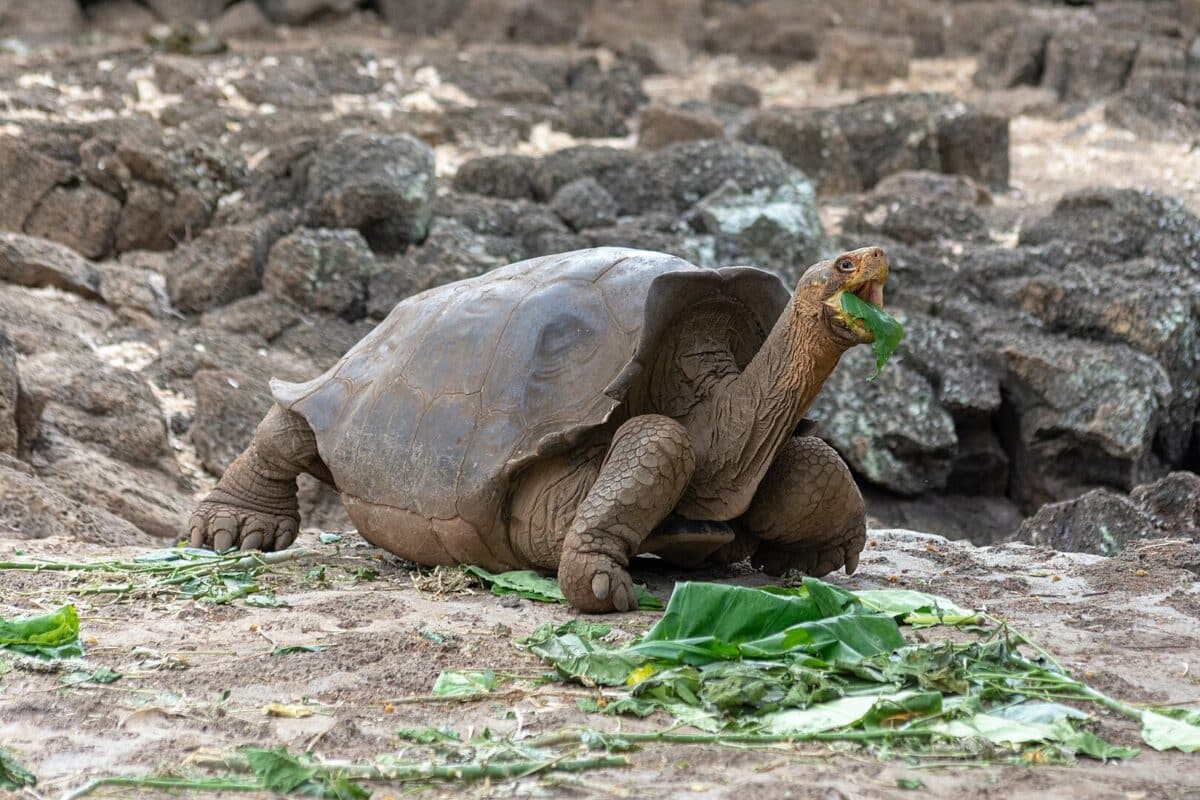
4. Galápagos Penguin – The Tropical Penguin
The Galápagos penguin is a remarkable bird and the only one that breeds in the tropics. These small, agile birds adapt to cold water and swim long distances to catch fish. The Galápagos Islands are home to one of the smallest penguin populations in the world. Visitors can often see them darting through the water or perched on rocky outcrops.
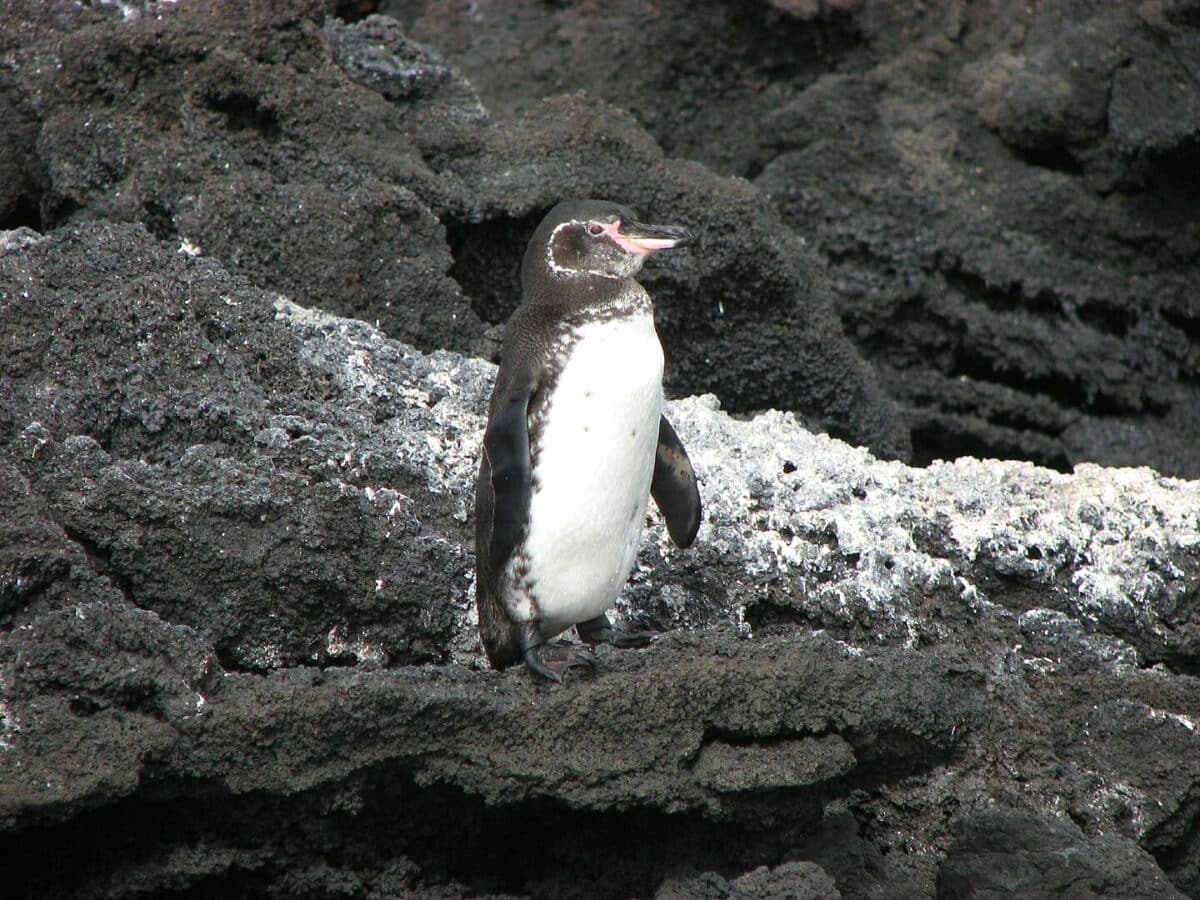
5. Galápagos Sea Lion – The Playful Pinniped
The Galápagos sea lion is a charismatic and playful creature that will delight visitors to the archipelago. These friendly mammals are famous for their barks and grunts that can be heard from far away. Visitors often spot these fascinating creatures lazing on the beach or swimming in the surf.
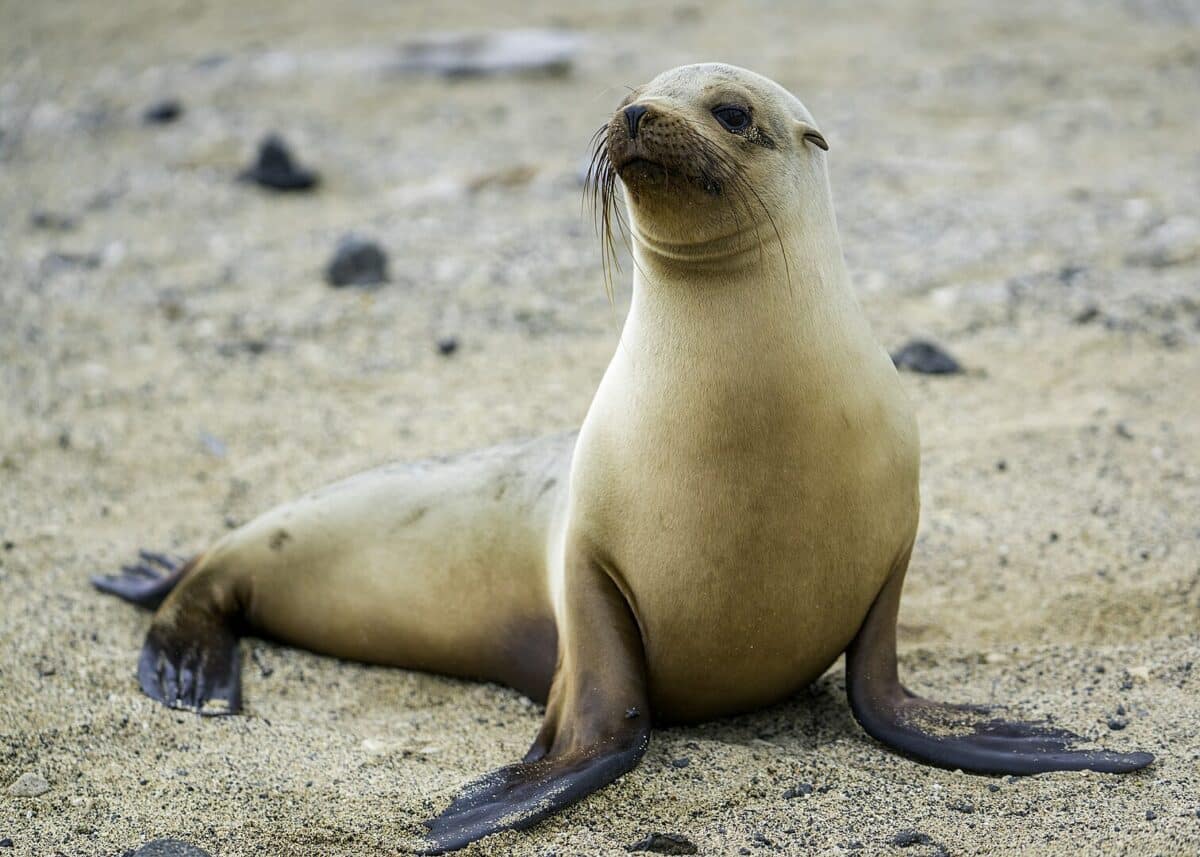
6. Flightless Cormorant – Unique Adaptation Of A Galápagos Bird
This is a unique species of bird that has evolved over millions of years. As their name suggests, these birds cannot fly. However, they can swim and dive up to 100 feet deep in search of fish, their primary food source. These particular cormorant species are unique in their inability to fly, with their wings having evolved to become smaller and less functional.
One of the most striking features of the flightless cormorant is its blue eye-ring. This contrasts beautifully with its dark feathers. They have webbed feet and sharp beaks adapted for catching and eating fish. Due to their isolation on the Galápagos Islands, they have no natural predators. This has allowed them to thrive and evolve into this unique species.
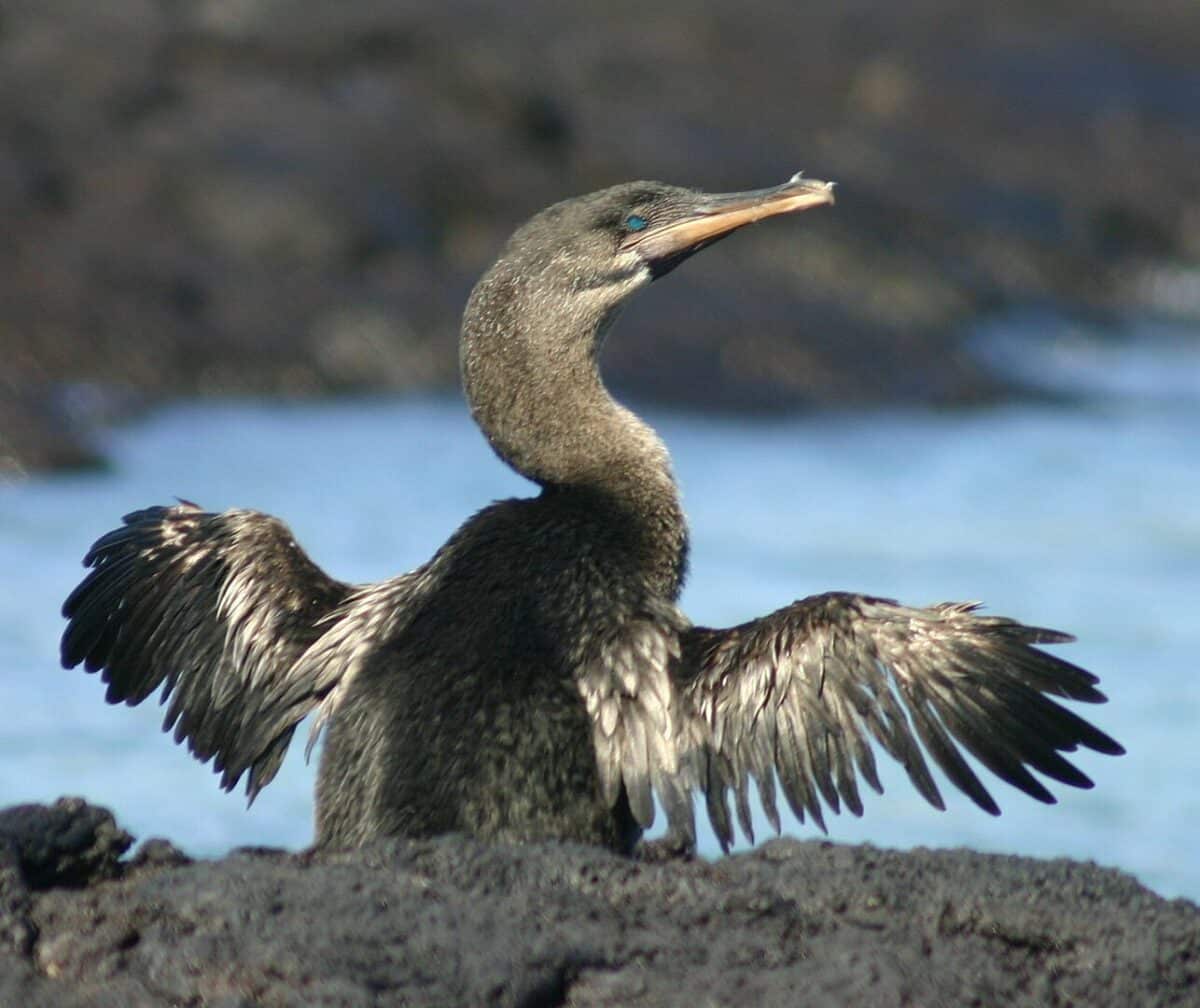
Darwin’s finches, a renowned avian group, played a pivotal role in shaping Charles Darwin’s theory of evolution. These avian species are indigenous to the Galápagos Islands. Darwin observed that they had different beak shapes and sizes, which he believed were adaptations to their specific environments and food sources.
On the islands, a remarkable assortment of 13 distinct species of Darwin’s finches can be found, each exhibiting a unique variation in their beak shape. Some have long, pointed beaks for probing into cactus flowers, while others have short, sturdy beaks for cracking open seeds. The finches have also developed different feeding behaviors, some being ground feeders and others feeding mid-air.
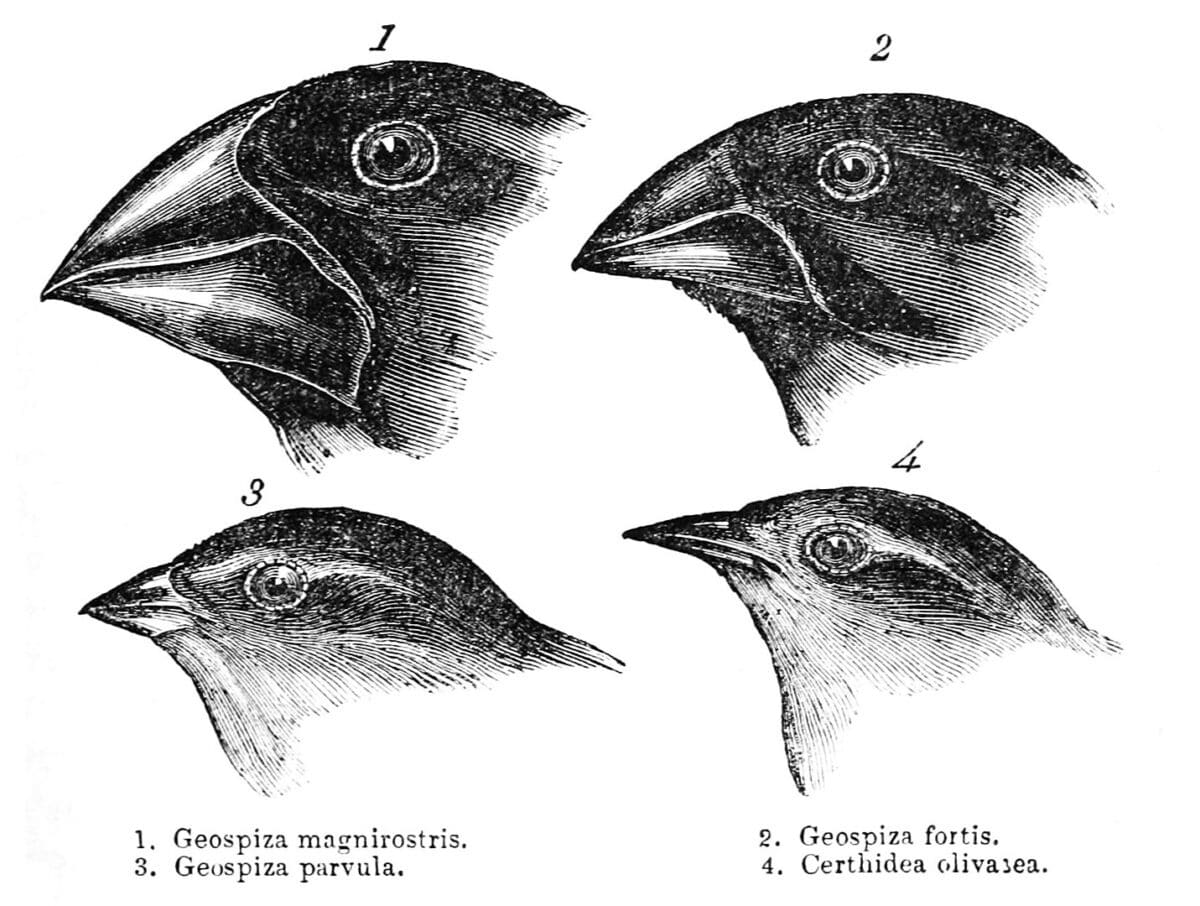
8. Waved Albatross – World’s Only Tropical Albatross
The waved albatross in the Galápagos Islands is renowned for its impressive size, boasting a wingspan reaching 8 feet. These birds are known for their unique courtship rituals involving a dance that includes honking, bill clapping, and a head-bobbing display.
The waved albatrosses exhibit a lifelong commitment to their mates and faithfully revisit the identical nesting site annually for breeding purposes. During each breeding season, they lay a single egg, and both parents share the responsibilities of incubating the egg and tending to the offspring. These birds are threatened due to their limited breeding range, and conservation efforts are in place to help protect them.
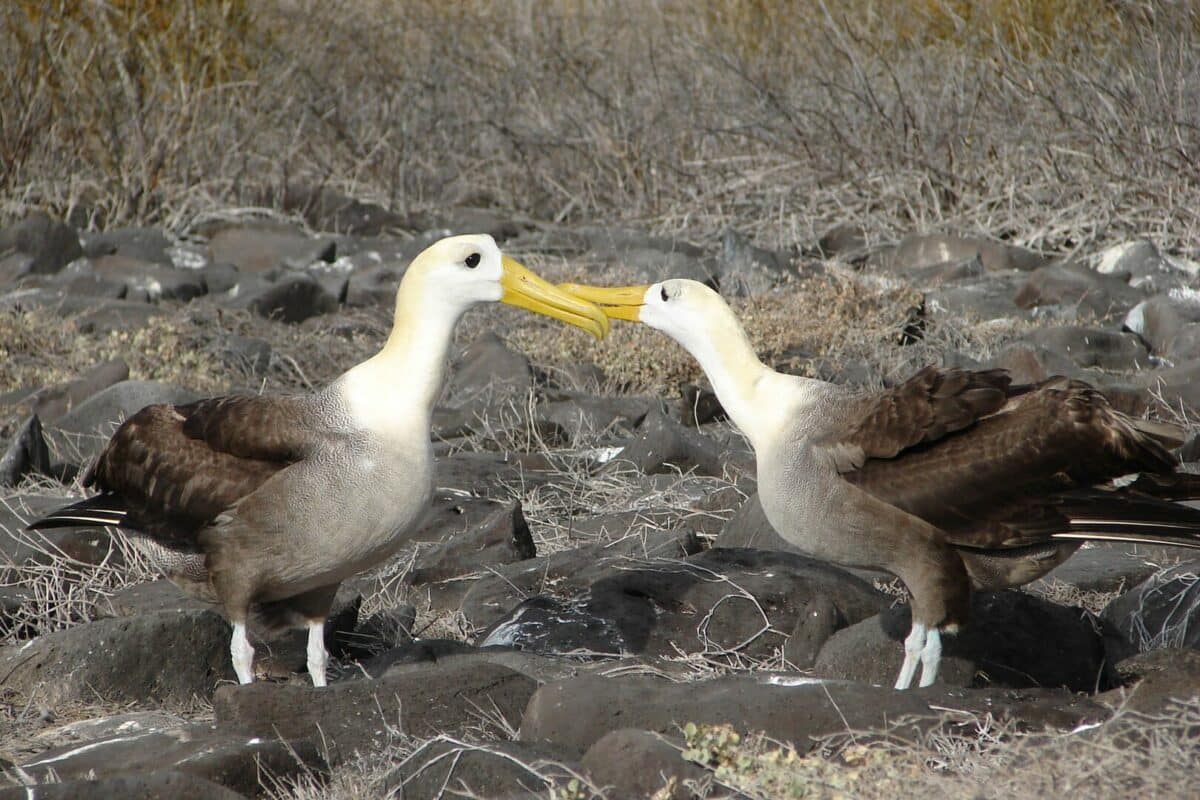
9. Galapagos Hawk – Raptor Of The Galápagos Islands
The Galapagos hawk is the only endemic predator on the islands. These birds are opportunistic hunters and prey on small mammals, reptiles, and other birds. A distinctive feature of the Galapagos hawk is its reddish-brown feathers and piercing yellow eyes.
They are often seen perched on high rocks, waiting for their prey to pass by. Due to their limited range and small population, the Galapagos hawk is considered vulnerable, and conservation efforts are in place to protect them.
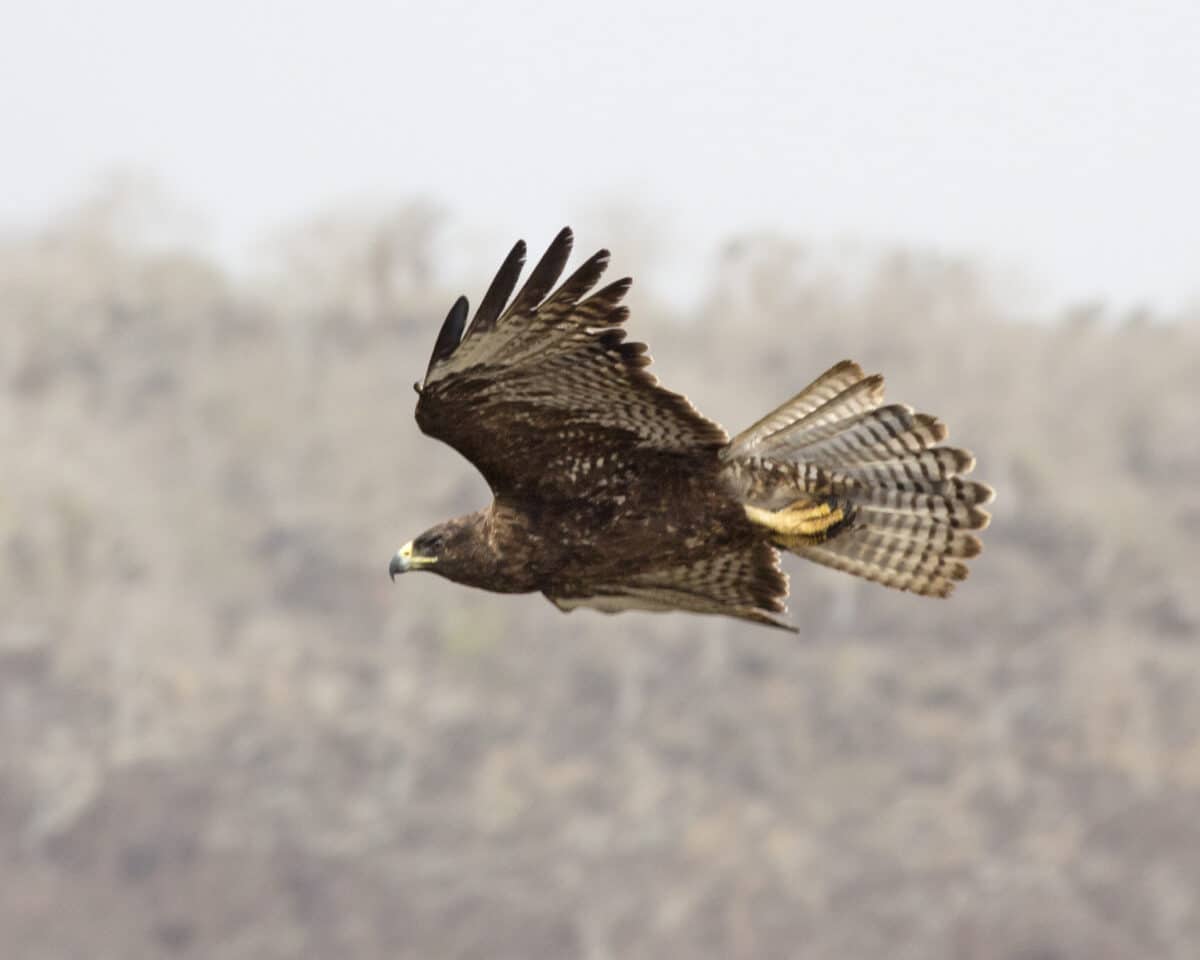
10. Galapagos Land Iguana – Unique Reptile On Galápagos Islands
The Galapagos land iguana is an iconic island reptile endemic. These creatures are known for their bright yellow skin and spiny backs, which protect against predators. They are herbivores and feed on fruits, flowers, and cacti.
Unlike their marine iguana cousins, land iguanas are not strong swimmers and are more commonly found on land. These iguanas can live up to 50 years, and females lay up to 20 eggs yearly. Due to habitat loss and predation by introduced species, the Galapagos land iguana is considered vulnerable, and conservation efforts are in place to protect them.
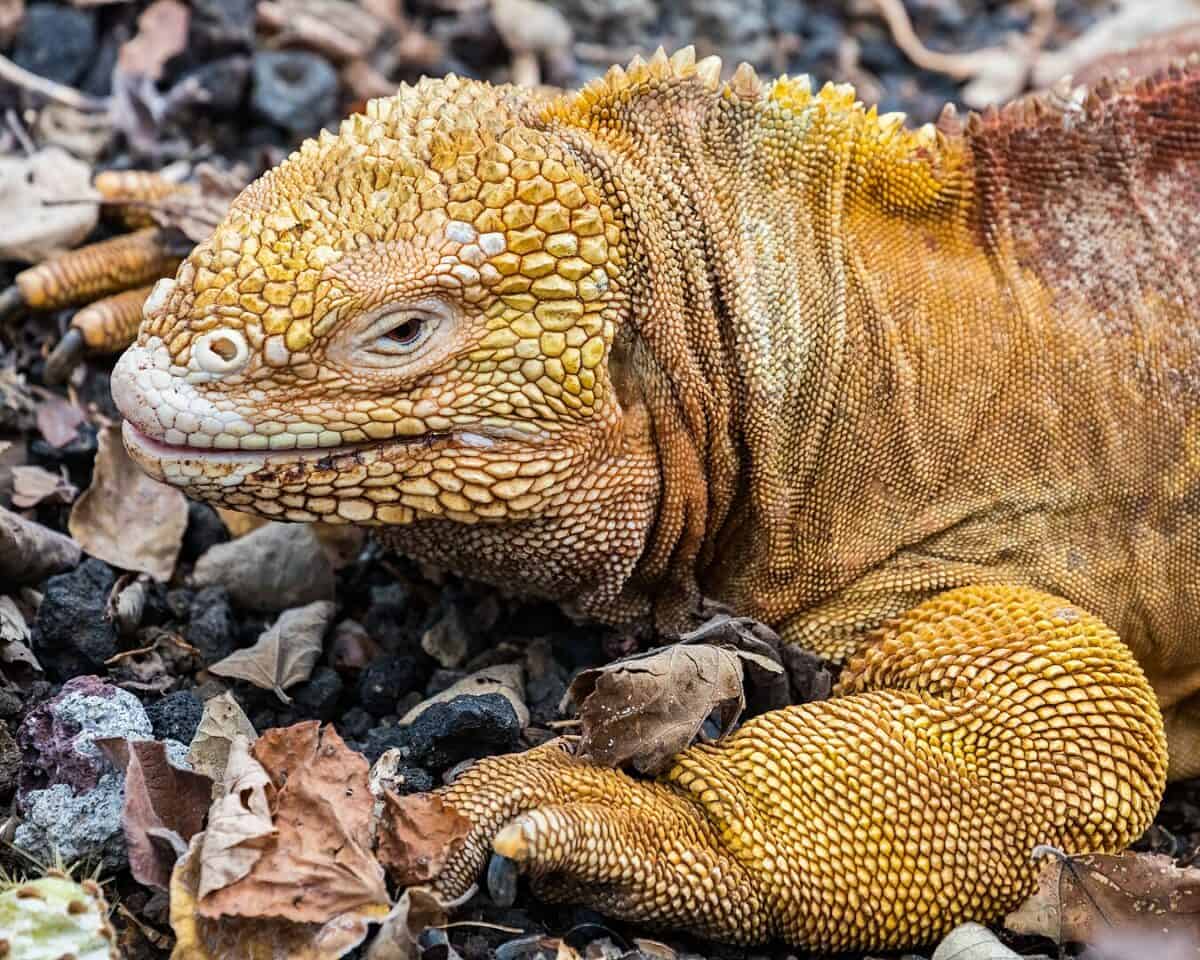
Frequently Asked Questions
What Are The Must-See Animals In The Galápagos Islands?
Our top 10 list includes the Galapagos Giant Tortoise, Marine Iguana, Blue-footed Booby, Waved Albatross, Darwin’s finches, Flightless Cormorant, Galapagos Sea Lion, Galapagos Penguin, Sally Lightfoot Crab, Hammerhead Shark.
How Did The Galápagos Islands Become Home To These Unique Animals?
The Galápagos Islands are a group of volcanic islands located off the coast of Ecuador. The isolation and harsh climate of the islands have allowed the animals to adapt to their environment in unique ways over millions of years of evolution.
Are There Any Conservation Efforts To Protect These Animals?
Yes! The Galápagos Islands are a protected national park, and conservation efforts are ongoing to protect the unique flora and fauna of the region. The Charles Darwin Foundation works to protect native species and ecosystems while also conducting research and education programs. Island visitors are encouraged to follow strict guidelines to preserve the fragile environment.
The Bottom Line
It would be an incredible experience to journey into the Galápagos Islands and explore its many remarkable animals! From the Galapagos Giant Tortoise to Darwin’s finches, there is something quite magical about getting up close and personal with some of the rarest creatures on Earth.
If you are looking for an amazing yet unique adventure, look no further than the Galápagos Islands! With our guidance, you will explore what Charles Darwin famously described as “a little world within itself.”
So don’t let this once-in-a-lifetime opportunity pass you by – book your spot on our tour today! Whether looking for an educational holiday or simply seeking some amazing animal encounters, the Galápagos Islands should be at the top of your bucket list!
If you enjoyed this blog, read more on:
Iguana Eats Cereal At the Breakfast Table
Join our Forum for free today!

- Usain Bolt vs. Peregrine Falcon – Speed Test in Their Domains - May 18, 2024
- Top 10 Animals in Yellowstone National Park - April 12, 2024
- Top 10 Omnivores - March 9, 2024

